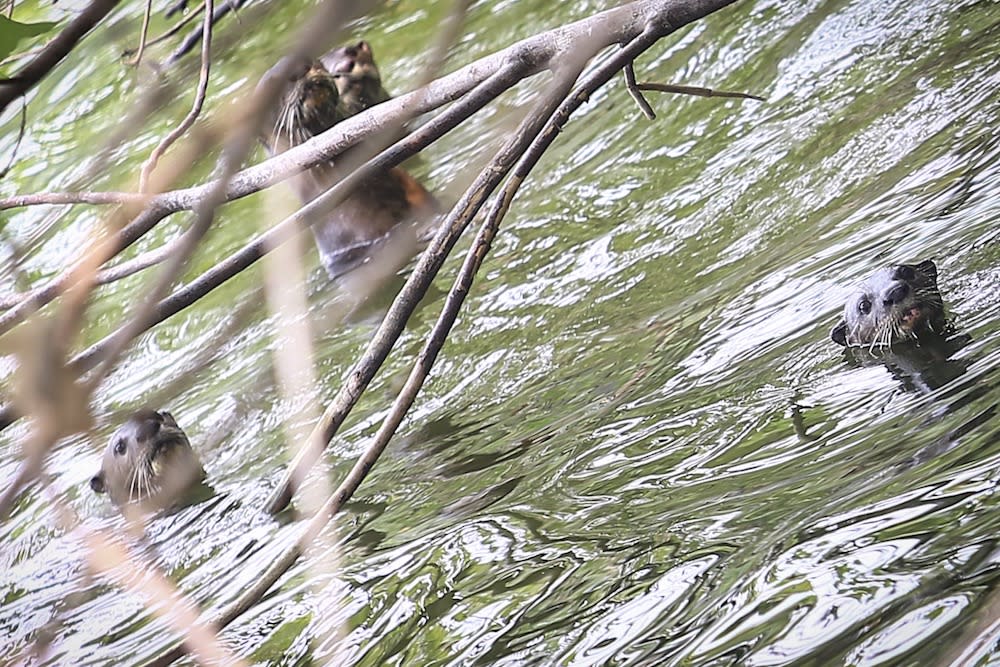Green groups, lawmakers pleasantly surprised to learn of otters nesting in KL park

KUALA LUMPUR, Sept 22 — The presence of wild otters in Taman Tasik Metropolitan Kepong in the heart of urban Kuala Lumpur has taken environmentalist NGOs and politicians by surprise, with some wondering how they ended up there.
When contacted, Selayang MP William Leong said he would endeavour to protect the semiaquatic animals, especially after learning they may be smooth-coated otters that are a ‘threatened’ species on the animal conservation list.
“I will be happy to help in the protection of these urban otters, who have obviously learned to adapt to the present environment,” he told Malay Mail, adding that he welcomed NGOs to contact him about possible conservation efforts.
Kepong MP Lim Lip Eng said he has already taken the initial steps in protecting the otters.
“I have spoken to the Kuala Lumpur City Hall (DBKL) Mayor Datuk Nor Hisham Ahmad Dahlan on Wednesday (September 11). He agreed to form a special team to look into this threatened species,” he said.
This is not the first time Nor Hisham has shown an interest in protecting endangered animals, as DBKL recently signed a memorandum of understanding with the Malaysian Zoological Society at the National Zoo to save the critically endangered Malayan tiger.
EcoKnights KL and Selangor founder Yasmin Rashid said she was fascinated by the revelation, adding that there was now even more reason to preserve the green lung and its surrounding areas.
“Although we focus more on urban sustainability, but if the otters are in the city, we probably may want to look into this. I often see them downstream near estuaries, but in the city, this is the first,” she said.
Yasmin theorised that the otters may have swum upstream from their native habitats, escaped domestic captivity, and if indeed a threatened species, possibly set loose by wildlife traffickers for unknown reasons.
“They are just so, so cute. I genuinely wish they could talk, so we would know how they got there,” she said.

However, Association for the Protection of Natural Heritage of Malaysia president Puan Sri Shariffa Sabrina Syed Akil voiced suspicion that the otters may have been intentionally released into the lake.
“It is very unusual for these animals to be in urban areas, in part due to the lack of sensitivity by humans for nature, which has allowed weird things like this to occur,” she said.
Malaysian Nature Society’s (MNS) head of conservation Balu Perumal said if the otters have been present in the park and its lake for some time now, they should be considered native creatures. The lake also has tortoises alongside the plentiful fish that attract the otters.
“I suppose it makes sense, as all the lakes around KL are former tin-mining areas. When sufficiently large water bodies are created containing enough food resources, such animals will come and make their homes there,” he said.
Much of MNS’ knowledge on otters comes from operating the Kuala Selangor Nature Park for over 30 years, where three of the four otter species in Malaysia are kept.
Adding that the otters have likely adapted to the people who frequent the park, Balu said there could even be several otter families residing in the lake.
“I certainly am worried about what can happen if they come under greater attention. The authorities should play their part in saving these threatened animals, by properly fencing off the areas so that the public can enjoy seeing the otters without disturbing them.
“Similarly, when the authorities are notified, the last thing I would advise is rounding up the otters to be sent to the National Zoo. This is the worst possible thing that could happen, as they are more suited to being in the wild as opposed to captivity,” he said.
On its part, Balu said MNS will see what role it can play in helping to preserve the otters and their home. But he pleaded with the public to not bother the creatures excessively.
“We must understand that wild animals are also citizens of Malaysia. They should have equal rights on the same level as human beings.
“If possible, provide a better or more conducive environment for the otters. The public must be sensitised to not disturb them. If you want to see them, do so from a distance,” he said.
Related Articles In urban Kuala Lumpur, an otter surprise After sun bear in condo case, public told to sponsor, not keep wild animals as pets Wildlife chief to Johor elephant killers: We will hunt you down



